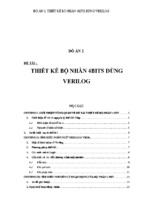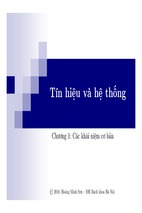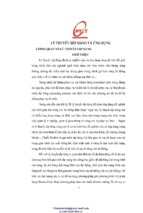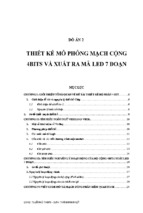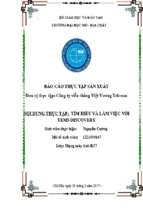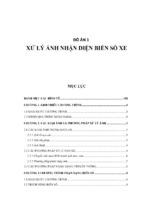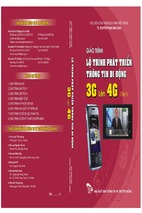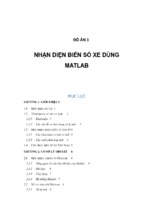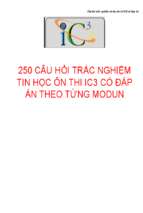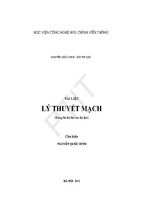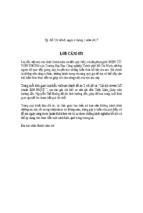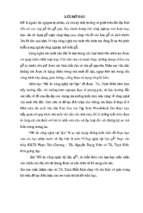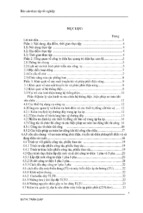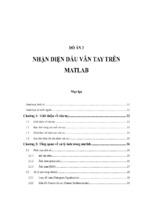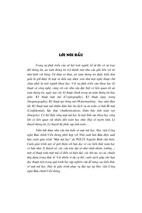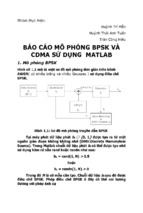WCDMA FOR UMTS - HSPA Evolution and LTE 2010
WCDMA FOR UMTS
WCDMA FOR UMTS
HSPA Evolution and LTE
Fifth Edition
Edited by
Harri Holma and Antti Toskala
Nokia Siemens Networks, Finland
A John Wiley and Sons, Ltd., Publication
This edition first published 2010
2010 John Wiley & Sons Ltd.
Registered office
John Wiley & Sons Ltd, The Atrium, Southern Gate, Chichester, West Sussex, PO19 8SQ, United Kingdom
For details of our global editorial offices, for customer services and for information about how to apply for
permission to reuse the copyright material in this book please see our website at www.wiley.com.
The right of the author to be identified as the author of this work has been asserted in accordance with the
Copyright, Designs and Patents Act 1988.
All rights reserved. No part of this publication may be reproduced, stored in a retrieval system, or transmitted, in
any form or by any means, electronic, mechanical, photocopying, recording or otherwise, except as permitted by
the UK Copyright, Designs and Patents Act 1988, without the prior permission of the publisher.
Wiley also publishes its books in a variety of electronic formats. Some content that appears in print may not be
available in electronic books.
Designations used by companies to distinguish their products are often claimed as trademarks. All brand names
and product names used in this book are trade names, service marks, trademarks or registered trademarks of their
respective owners. The publisher is not associated with any product or vendor mentioned in this book. This
publication is designed to provide accurate and authoritative information in regard to the subject matter covered.
It is sold on the understanding that the publisher is not engaged in rendering professional services. If professional
advice or other expert assistance is required, the services of a competent professional should be sought.
Library of Congress Cataloging-in-Publication Data
WCDMA for UMTS: HSPA evolution and LTE / edited by Harri Holma, Antti Toskala. –
5th ed.
p. cm.
Includes bibliographical references and index.
ISBN 978-0-470-68646-1 (cloth)
1. Code division multiple access. 2. Wireless communication systems – Standards.
3. Mobile communication systems – Standards. 4. Global system for mobile communications.
I. Holma, Harri, 1970- II. Toskala, Antti.
TK5103.452.W39 2010
621.3845 – dc22
2010013154
A catalogue record for this book is available from the British Library.
ISBN 978-0-470-68646-1 (H/B)
Typeset in 9/11 Times by Laserwords Private Limited, Chennai, India.
Printed and bound in the United Kingdom by Antony Rowe Ltd, Chippenham, Wiltshire.
Contents
Preface
xvii
Acknowledgements
xix
Abbreviations
xxi
1
Introduction
Harri Holma and Antti Toskala
1
1.1
1.2
1.3
1.4
1.5
1.6
WCDMA Early Phase
HSPA Introduction and Data Growth
HSPA Deployments Globally
HSPA Evolution
HSPA Network Product
HSPA Future Outlook
References
1
2
4
5
6
7
8
2
UMTS Services
Harri Holma, Martin Kristensson, Jouni Salonen, Antti Toskala and Tommi Uitto
9
2.1
2.2
Introduction
Voice
2.2.1
Narrowband AMR and Wideband AMR Voice Services
2.2.2
Circuit-Switched over HSPA
2.2.3
Push-to-Talk over Cellular (PoC)
2.2.4
Voice-over IP
2.2.5
Key Performance Indicators for Voice
Video Telephony
2.3.1
Multimedia Architecture for Circuit Switched Connections
2.3.2
Video Codec
Messaging
2.4.1
Short Messaging Service (SMS)
2.4.2
Multimedia Messaging Service (MMS)
2.4.3
Voice Mail and Audio Messaging
2.4.4
Instant Messaging
Mobile Email
Browsing
Application and Content Downloading
Streaming
Gaming
2.3
2.4
2.5
2.6
2.7
2.8
2.9
9
11
12
14
16
17
17
18
19
20
21
21
21
22
22
22
23
24
26
26
vi
2.10
2.11
2.12
2.13
2.14
2.15
2.16
2.17
2.18
3
3.1
3.2
3.3
3.4
3.5
3.6
4
4.1
4.2
4.3
4.4
4.5
4.6
4.7
4.8
4.9
4.10
4.11
4.12
Contents
Mobile Broadband for Laptop and Netbook Connectivity
2.10.1
End-to-End Security
2.10.2
Impact of Latency on Application Performance
Social Networking
Mobile TV
Location-Based Services
2.13.1
Cell Coverage-Based Location Calculation
2.13.2
Assisted GPS (A-GPS)
Machine-to-Machine Communications
Quality of Service (QoS) Differentiation
Maximum Air Interface Capacity
Terminals
Tariff Schemes
References
27
29
29
30
31
32
33
33
34
35
40
44
45
45
Introduction to WCDMA
Peter Muszynski and Harri Holma
Introduction
Summary of the Main Parameters in WCDMA
Spreading and Despreading
Multipath Radio Channels and Rake Reception
Power Control
Softer and Soft Handovers
References
47
Background and Standardization of WCDMA
Antti Toskala
Introduction
Background in Europe
4.2.1
Wideband CDMA
4.2.2
Wideband TDMA
4.2.3
Wideband TDMA/CDMA
4.2.4
OFDMA
4.2.5
ODMA
4.2.6
ETSI Selection
Background in Japan
Background in Korea
Background in the United States
4.5.1
W-CDMA N/A
4.5.2
UWC-136
4.5.3
cdma2000
4.5.4
TR46.1
4.5.5
WP-CDMA
Creation of 3GPP
How Does 3GPP Operate?
Creation of 3GPP2
Harmonization Phase
IMT-2000 Process in ITU
Beyond 3GPP Release 99 WCDMA
Industry Convergence with LTE and LTE-Advanced
References
47
47
49
51
55
57
59
61
61
61
62
63
63
64
64
64
64
65
65
65
66
66
66
66
67
68
69
69
70
70
72
73
Contents
vii
5
75
5.1
5.2
5.3
5.4
5.5
5.6
5.7
6
6.1
6.2
6.3
6.4
Radio Access Network Architecture
Fabio Longoni, Atte Länsisalmi and Antti Toskala
Introduction
UTRAN Architecture
5.2.1
The Radio Network Controller (RNC)
5.2.2
The Node B (Base Station)
General Protocol Model for UTRAN Terrestrial Interfaces
5.3.1
General
5.3.2
Horizontal Layers
5.3.3
Vertical Planes
Iu, the UTRAN–CN Interface
5.4.1
Protocol Structure for Iu CS
5.4.2
Protocol Structure for Iu PS
5.4.3
RANAP Protocol
5.4.4
Iu User Plane Protocol
5.4.5
Protocol Structure of Iu BC, and the Service Area Broadcast Protocol
UTRAN Internal Interfaces
5.5.1
RNC–RNC Interface (Iur Interface) and the RNSAP Signaling
5.5.2
RNC–Node B Interface and the NBAP Signaling
UTRAN Enhancements and Evolution
5.6.1
IP Transport in UTRAN
5.6.2
Iu Flex
5.6.3
Stand-Alone SMLC and Iupc Interface
5.6.4
Interworking between GERAN and UTRAN, and the Iur-g Interface
5.6.5
IP-Based RAN Architecture
UMTS CN Architecture and Evolution
5.7.1
Release 99 CN Elements
5.7.2
Release 5 CN and IP Multimedia Subsystem
References
Physical Layer
Antti Toskala
Introduction
Transport Channels and Their Mapping to the Physical Channels
6.2.1
Dedicated Transport Channel
6.2.2
Common Transport Channels
6.2.3
Mapping of Transport Channels onto the Physical Channels
6.2.4
Frame Structure of Transport Channels
Spreading and Modulation
6.3.1
Scrambling
6.3.2
Channelization Codes
6.3.3
Uplink Spreading and Modulation
6.3.4
Downlink Spreading and Modulation
6.3.5
Transmitter Characteristics
User Data Transmission
6.4.1
Uplink Dedicated Channel
6.4.2
Uplink Multiplexing
6.4.3
User Data Transmission with the Random Access Channel
6.4.4
Uplink Common Packet Channel
6.4.5
Downlink Dedicated Channel
6.4.6
Downlink Multiplexing
75
78
79
80
80
80
80
80
81
82
83
84
85
86
87
87
89
91
91
92
92
92
92
93
93
94
95
97
97
98
99
99
101
102
102
102
102
104
107
110
110
111
113
115
115
116
117
viii
6.5
6.6
6.7
6.8
7
7.1
7.2
7.3
7.4
7.5
7.6
7.7
7.8
Contents
6.4.7
Downlink Shared Channel
6.4.8
Forward Access Channel for User Data Transmission
6.4.9
Channel Coding for User Data
6.4.10
Coding for TFCI Information
Signaling
6.5.1
Common Pilot Channel (CPICH)
6.5.2
Synchronization Channel (SCH)
6.5.3
Primary Common Control Physical Channel (Primary CCPCH)
6.5.4
Secondary Common Control Physical Channel (Secondary CCPCH)
6.5.5
Random Access Channel (RACH) for Signaling Transmission
6.5.6
Acquisition Indicator Channel (AICH)
6.5.7
Paging Indicator Channel (PICH)
Physical Layer Procedures
6.6.1
Fast Closed-Loop Power Control Procedure
6.6.2
Open-Loop Power Control
6.6.3
Paging Procedure
6.6.4
RACH Procedure
6.6.5
Cell Search Procedure
6.6.6
Transmit Diversity Procedure
6.6.7
Handover Measurements Procedure
6.6.8
Compressed Mode Measurement Procedure
6.6.9
Other Measurements
6.6.10
Operation with Adaptive Antennas
6.6.11
Site Selection Diversity Transmission
Terminal Radio Access Capabilities
Conclusion
References
119
119
120
121
121
121
122
122
123
124
124
125
126
126
126
127
127
128
129
130
132
133
134
135
136
138
139
Radio Interface Protocols
Jukka Vialén and Antti Toskala
Introduction
Protocol Architecture
The Medium Access Control Protocol
7.3.1
MAC Layer Architecture
7.3.2
MAC Functions
7.3.3
Logical Channels
7.3.4
Mapping between Logical Channels and Transport Channels
7.3.5
Example Data Flow Through the MAC Layer
The Radio Link Control Protocol
7.4.1
RLC Layer Architecture
7.4.2
RLC Functions
7.4.3
Example Data Flow Through the RLC Layer
The Packet Data Convergence Protocol
7.5.1
PDCP Layer Architecture
7.5.2
PDCP Functions
The Broadcast/Multicast Control Protocol
7.6.1
BMC Layer Architecture
7.6.2
BMC Functions
Multimedia Broadcast Multicast Service
The Radio Resource Control Protocol
141
141
142
143
143
144
145
145
146
147
147
148
149
150
150
151
151
152
152
152
153
Contents
7.9
7.10
8
8.1
8.2
8.3
8.4
8.5
8.6
8.7
8.8
8.9
8.10
8.11
9
9.1
9.2
9.3
ix
7.8.1
RRC Layer Logical Architecture
7.8.2
RRC Service States
7.8.3
RRC Functions and Signaling Procedures
Early UE Handling Principles
Improvements for Call Set-up Time Reduction
References
153
154
157
170
170
171
Radio Network Planning
Harri Holma, Zhi-Chun Honkasalo, Seppo Hämäläinen, Jaana Laiho,
Kari Sipilä and Achim Wacker
Introduction
Dimensioning
8.2.1
Radio Link Budgets
8.2.2
Load Factors
8.2.3
Capacity Upgrade Paths
8.2.4
Capacity per km2
8.2.5
Soft Capacity
8.2.6
Network Sharing
Capacity and Coverage Planning and Optimization
8.3.1
Iterative Capacity and Coverage Prediction
8.3.2
Planning Tool
8.3.3
Case Study
8.3.4
Network Optimization
GSM Co-planning
Inter-Operator Interference
8.5.1
Introduction
8.5.2
Uplink Versus Downlink Effects
8.5.3
Local Downlink Interference
8.5.4
Average Downlink Interference
8.5.5
Path Loss Measurements
8.5.6
Solutions to Avoid Adjacent Channel Interference
WCDMA Frequency Variants
UMTS Refarming to GSM Band
8.7.1
Coverage of UMTS900
Interference between GSM and UMTS
Remaining GSM Voice Capacity
Shared Site Solutions with GSM and UMTS
Interworking of UMTS900 and UMTS2100
References
173
Radio Resource Management
Harri Holma, Klaus Pedersen, Jussi Reunanen,
Janne Laakso and Oscar Salonaho
Introduction
Power Control
9.2.1
Fast Power Control
9.2.2
Outer Loop Power Control
Handovers
9.3.1
Intra-Frequency Handovers
9.3.2
Inter-System Handovers between WCDMA and GSM
173
174
175
178
188
189
190
193
194
194
194
197
199
202
204
204
206
206
207
209
209
210
211
212
214
215
216
217
218
219
219
220
220
226
232
232
241
x
Contents
9.3.3
Inter-Frequency Handovers within WCDMA
9.3.4
Summary of Handovers
Measurement of Air Interface Load
9.4.1
Uplink Load
9.4.2
Downlink Load
Admission Control
9.5.1
Admission Control Principle
9.5.2
Wideband Power-Based Admission Control Strategy
9.5.3
Throughput-Based Admission Control Strategy
Load Control (Congestion Control)
References
244
245
246
246
249
250
250
250
252
252
253
10
Packet Scheduling
Jeroen Wigard, Harri Holma, Renaud Cuny, Nina Madsen, Frank Frederiksen
and Martin Kristensson
255
10.1
10.2
10.3
10.4
Introduction
Transmission Control Protocol (TCP)
Round Trip Time
User-Specific Packet Scheduling
10.4.1
Common Channels (RACH/FACH)
10.4.2
Dedicated Channel (DCH)
10.4.3
Downlink Shared Channel (DSCH)
10.4.4
Uplink Common Packet Channel (CPCH)
10.4.5
Selection of Transport Channel
10.4.6
Paging Channel States
Cell-Specific Packet Scheduling
10.5.1
Priorities
10.5.2
Scheduling Algorithms
10.5.3
Packet Scheduler in Soft Handover
Packet Data System Performance
10.6.1
Link Level Performance
10.6.2
System Level Performance
Packet Data Application Performance
10.7.1
Introduction to Application Performance
10.7.2
Person-to-Person Applications
10.7.3
Content-to-Person Applications
10.7.4
Business Connectivity
10.7.5
Conclusions on Application Performance
References
255
255
261
264
264
265
267
267
268
270
272
274
274
275
275
275
277
280
280
281
284
287
289
291
11
Physical Layer Performance
Harri Holma, Jussi Reunanen, Leo Chan, Preben Mogensen, Klaus Pedersen,
Kari Horneman, Jaakko Vihriälä and Markku Juntti
293
11.1
11.2
Introduction
Cell Coverage
11.2.1
Uplink Coverage
11.2.2
Downlink Coverage
Downlink Cell Capacity
11.3.1
Downlink Orthogonal Codes
293
293
295
304
304
305
9.4
9.5
9.6
10.5
10.6
10.7
11.3
Contents
11.4
11.5
11.6
12
12.1
12.2
12.3
12.4
12.5
12.6
12.7
12.8
12.9
12.10
12.11
12.12
12.13
12.14
12.15
13
13.1
13.2
xi
11.3.2
Downlink Transmit Diversity
11.3.3
Downlink Voice Capacity
Capacity Trials
11.4.1
Single Cell Capacity Trials
11.4.2
Multicell Capacity Trials
11.4.3
Summary
3GPP Performance Requirements
11.5.1
Eb /N0 Performance
11.5.2
RF Noise Figure
Performance Enhancements
11.6.1
Smart Antenna Solutions
11.6.2
Multiuser Detection
References
310
312
313
313
327
328
330
330
333
334
334
340
349
High-Speed Downlink Packet Access
Antti Toskala, Harri Holma, Troels Kolding, Preben Mogensen, Klaus Pedersen
and Jussi Reunanen
Introduction
Release 99 WCDMA Downlink Packet Data Capabilities
The HSDPA Concept
HSDPA Impact on Radio Access Network Architecture
Release 4 HSDPA Feasibility Study Phase
HSDPA Physical Layer Structure
12.6.1
High-Speed Downlink Shared Channel (HS-DSCH)
12.6.2
High-Speed Shared Control Channel (HS-SCCH)
12.6.3
Uplink High-Speed Dedicated Physical Control Channel (HS-DPCCH)
12.6.4
HSDPA Physical Layer Operation Procedure
HSDPA Terminal Capability and Achievable Data Rates
Mobility with HSDPA
12.8.1
Measurement Event for Best Serving HS-DSCH Cell
12.8.2
Intra-Node B HS-DSCH to HS-DSCH Handover
12.8.3
Inter-Node–Node B HS-DSCH to HS-DSCH Handover
12.8.4
HS-DSCH to DCH Handover
HSDPA Performance
12.9.1
Factors Governing Performance
12.9.2
Spectral Efficiency, Code Efficiency and Dynamic Range
12.9.3
User Scheduling, Cell Throughput and Coverage
12.9.4
HSDPA Network Performance with Mixed Non-HSDPA and HSDPA Terminals
HSPA Link Budget
HSDPA Iub Dimensioning
HSPA Round Trip Time
Terminal Receiver Aspects
Evolution in Release 6
Conclusion
References
353
High-Speed Uplink Packet Access
Antti Toskala, Harri Holma and Karri Ranta-aho
Introduction
Release 99 WCDMA Downlink Packet Data Capabilities
353
353
354
356
357
357
357
361
362
363
365
366
367
367
368
369
370
371
371
374
378
380
382
384
384
386
388
388
391
391
391
xii
Contents
13.3
13.4
The HSUPA Concept
HSUPA Impact on Radio Access Network Architecture
13.4.1
HSUPA Iub Operation
13.5 HSUPA Feasibility Study Phase
13.6 HSUPA Physical Layer Structure
13.7 E-DCH and Related Control Channels
13.7.1
E-DPDCH
13.7.2
E-DPCCH
13.7.3
E-HICH
13.7.4
E-RGCH
13.7.5
E-AGCH
13.8 HSUPA Physical Layer Operation Procedure
13.8.1
HSUPA and HSDPA Simultaneous Operation
13.9 HSUPA Terminal Capability
13.10 HSUPA Performance
13.10.1 Increased Data Rates
13.10.2 Physical Layer Retransmission Combining
13.10.3 Node B-Based Scheduling
13.10.4 HSUPA Link Budget Impact
13.10.5 Delay and QoS
13.10.6 Overall Capacity
13.11 Conclusion
References
392
393
394
395
395
396
396
398
399
399
399
400
401
402
403
404
404
404
406
406
407
408
408
14
409
Multimedia Broadcast Multicast Service (MBMS)
Harri Holma, Martin Kristensson and Jorma Kaikkonen
14.1 Introduction
14.2 MBMS Impact on Network Architecture
14.3 High Level MBMS Procedures
14.4 MBMS Radio Interface Channel Structure
14.4.1
Logical Channels
14.4.2
Transport Channels
14.4.3
Physical Channels
14.4.4
Point-to-Point and Point-to-Multipoint Connections
14.4.5
Example Radio Interface Procedure during MBMS Session Start
14.5 MBMS Terminal Capability
14.5.1
Selective Combining and Soft Combining
14.6 MBMS Performance
14.6.1
3GPP Performance Requirements
14.6.2
Simulated MBMS Cell Capacity
14.6.3
Iub Transport Capacity
14.7 MBMS Deployment and Use Cases
14.8 Benchmarking of MBMS with DVB-H
14.9 3GPP MBMS Evolution in Release 7
14.10 Why Did MBMS Fail?
14.11 Integrated Mobile Broadcast (IMB) in Release 8
14.12 Conclusion
References
409
412
414
415
415
416
416
416
417
418
418
419
419
421
423
424
425
426
426
427
428
429
Contents
xiii
15
HSPA Evolution
Harri Holma, Karri Ranta-aho and Antti Toskala
Introduction
Discontinuous Transmission and Reception (DTX/DRX)
Circuit Switched Voice on HSPA
Enhanced FACH and Enhanced RACH
Latency
Fast Dormancy
Downlink 64QAM
Downlink MIMO
Transmit Diversity (TxAA)
Uplink 16QAM
UE Categories
Layer 2 Optimization
Architecture Evolution
Conclusion
References
431
HSPA Multicarrier Evolution
Harri Holma, Karri Ranta-aho and Antti Toskala
Introduction
Dual Cell HSDPA in Release 8
Dual Cell HSUPA in Release 9
Dual Cell HSDPA with MIMO in Release 9
Dual Band HSDPA in Release 9
Three and Four Carrier HSDPA in Release 10
UE Categories
Conclusion
References
455
UTRAN Long-Term Evolution
Antti Toskala and Harri Holma
Introduction
Multiple Access and Architecture Decisions
LTE Impact on Network Architecture
LTE Multiple Access
17.4.1
OFDMA Principles
17.4.2
SC-FDMA Principles
LTE Physical Layer Design and Parameters
LTE Physical Layer Procedures
17.6.1
Random Access
17.6.2
Data Reception and Transmission
17.6.3
CQI Procedure
17.6.4
Downlink Transmission Modes
17.6.5
Uplink Transmission Modes
17.6.6
LTE Physical Layer Compared to WCDMA
LTE Protocols
467
15.1
15.2
15.3
15.4
15.5
15.6
15.7
15.8
15.9
15.10
15.11
15.12
15.13
15.14
16
16.1
16.2
16.3
16.4
16.5
16.6
16.7
16.8
17
17.1
17.2
17.3
17.4
17.5
17.6
17.7
431
431
433
437
439
441
442
444
447
448
449
450
451
452
453
455
459
461
462
463
464
465
465
466
467
468
470
471
471
474
476
479
479
479
481
482
483
483
483
xiv
Contents
17.8
Performance
17.8.1
Peak Bit Rates
17.8.2
Spectral Efficiency
17.8.3
Link Budget and Coverage
17.9 LTE Device Categories
17.10 LTE-Advanced Outlook
17.11 Conclusion
References
487
487
487
490
492
492
494
494
18
495
18.1
18.2
18.3
18.4
18.5
18.6
18.7
19
19.1
19.2
19.3
19.4
19.5
19.6
TD-SCDMA
Antti Toskala and Harri Holma
Introduction
18.1.1
TDD
Differences in the Network-Level Architecture
TD-SCDMA Physical Layer
18.3.1
Transport and Physical Channels
18.3.2
Modulation and Spreading
18.3.3
Physical Channel Structures, Slot and Frame Format
TD-SCDMA Data Rates
TD-SCDMA Physical Layer Procedures
18.5.1
Power Control
18.5.2
TD-SCDMA Receiver
18.5.3
Uplink Synchronization
18.5.4
Dynamic Channel Allocation
18.5.5
Summary of the TD-SCDMA Physical Layer Operation
TD-SCDMA Interference and Co-existence Considerations
18.6.1
TDD–TDD Interference
18.6.2
TDD and FDD Co-existence
18.6.3
Conclusions on TDD and TD-SCDMA Interference
Conclusion and Future Outlook on TD-SCDMA
References
Home Node B and Femtocells
Troels Kolding, Hanns-Jürgen Schwarzbauer, Johanna Pekonen, Karol Drazynski,
Jacek Gora, Maciej Pakulski, Patryk Pisowacki, Harri Holma and Antti Toskala
Introduction
Home Node B Specification Work
Technical Challenges of Uncoordinated Mass Deployment
Home Node B Architecture
19.4.1
Home Node B Protocols and Procedures for Network Interfaces
19.4.2
Femtocell Indication on a Terminal Display
Closed Subscriber Group
19.5.1
Closed Subscriber Group Management
19.5.2
Closed Subscriber Group Access Control
Home Node B-Related Mobility
19.6.1
Idle Mode Mobility
19.6.2
Outbound Relocations
19.6.3
Inbound Relocations
19.6.4
Relocations between HNB Cells
19.6.5
Paging Optimization
495
495
497
497
498
501
501
504
505
505
505
506
506
507
508
508
509
511
512
512
515
515
517
518
519
520
522
523
523
523
524
524
525
525
526
527
Contents
19.7
19.8
19.9
20
20.1
20.2
20.3
20.4
20.5
20.6
Index
xv
19.6.6
Home Node B to Macro Handover
19.6.7
Macro to Home Node B Handover
19.6.8
Home Node B Cell Identification Ambiguity
19.6.9
Summary of Home Node B-Related Mobility
Home Node B Deployment and Interference Mitigation
19.7.1
Home Node B Radio Frequency Aspects
19.7.2
Recommended 3G Home Node B Measurements
19.7.3
Home Node B Interference Considerations
19.7.4
Adaptive Control of Home Node B Transmit Powers
19.7.5
Femtocell Interference Simulations
19.7.6
Network Planning Aspects
19.7.7
Summary of Home Node B Frequency Usage
Home Node B Evolution
Conclusion
References
527
527
528
529
529
529
530
532
534
536
540
544
545
545
546
Terminal RF and Baseband Design Challenges
Laurent Noël, Dominique Brunel, Antti Toskala and Harri Holma
Introduction
Transmitter Chain System Design Challenges
20.2.1
The Adjacent Channel Leakage Ratio/Power Consumption Trade-Off
20.2.2
Phase Discontinuity
Receiver Chain Design Challenges
20.3.1
UE Reference Sensitivity System Requirements
20.3.2
Inter-Operator Interference
20.3.3
Impact of RF Impairments on HSDPA System Performance
Improving Talk-Time with DTX/DRX
20.4.1
Talk-Time Benchmark of Recent WCDMA Handsets
20.4.2
Trend in RF-IC Power Consumption and Model
20.4.3
Power Amplifier Control Schemes and Power Consumption Model
20.4.4
UE Power Consumption Models
20.4.5
Talk-Time Improvements in Circuit Switched Voice over HSPA with DTX/DRX
Multi-Mode/Band Challenges
20.5.1
From Mono-Mode/Mono-Band to Multi-Mode/Multi-Band and Diversity
20.5.2
New Requirements Due to Co-existence
20.5.3
Front End Integration Strategies and Design Trends
20.5.4
Impact on Today’s Architectures
Conclusion
References
547
547
549
549
554
555
556
563
566
567
568
570
573
577
579
582
582
584
588
588
590
590
593
Preface
Second generation telecommunication systems, such as GSM, enabled voice traffic to go wireless: the
number of mobile phones exceeds the number of landline phones and the mobile phone penetration
is approaching 100% in several markets. The data handling capabilities of second generation systems
are limited, however, and third generation systems are needed to provide the high bit rate services that
enable high quality images and video to be transmitted and received, and to provide access to the web
with higher data rates. These third generation mobile communication systems are referred to in this
book as UMTS (Universal Mobile Telecommunication System). WCDMA (Wideband Code Division
Multiple Access) and its evolution HSPA (High Speed Packet Access) is the main third generation air
interface globally. During the publication of the 5th edition, the number of WCDMA/HSPA subscribers
has exceeded 500 million. It is expected that the 1 billion landmark will be passed in less than two
years. There are over 300 commercial HSPA networks globally supporting peak data rates up to
42 Mbps. HSPA has grown to be the preferred radio network for providing wireless broadband access,
for supporting an increasing number of smart phones and for offering high capacity and high quality
voice service in an efficient way. This book gives a detailed description of the WCDMA/HSPA air
interface and its utilization. The contents are summarized in Figure 1.
Introduction (Chapter 1)
Background and
Standardisation
(Chapter 4)
Radio Resource Management
(Chapter 9)
Radio Access Network
Architecture (Chapter 5)
Packet Access (Chapter 10)
Radio Interface Protocols
(Chapter 7)
Physical Layer
(Chapter 6)
Radio Network
Planning
(Chapter 8)
HSPA Evolution
(Chapter 15)
Physical Layer Performance
(Chapter 11)
Introduction to WCDMA
(Chapter 3)
HSPA Multicarrier Evolution
(Chapter 16)
Long Term Evolution (LTE)
(Chapter 17)
MBMS
(Chapter 14)
Femto cells
(Chapter 19)
TD-SCDMA
(Chapter 18)
Figure 1.
UMTS Services
(Chapter 2)
Contents of this book
High Speed Packet
Access, HSDPA/HSUPA
(Chapter 12-13)
Terminal RF design
(Chapter 20)
xviii
Preface
The book is structured as follows. Chapters 1–4 provide an introduction to the technology and
its standardization. Chapters 5–7 give a detailed presentation of the WCDMA standard, while
Chapters 8–11 cover the utilization of the standard and its performance. Chapters 12–16 present
HSPA and its evolution. TD-SCDMA is described in Chapter 18. The home base stations, also called
femtocells, are explained in Chapter 19. Chapter 20 covers terminal RF design challenges.
Chapter 1 briefly introduces the background, development, status and future of WCDMA/HSPA
radio. Chapter 2 presents examples of the current UMTS applications and the main uses cases.
Chapter 3 introduces the principles of the WCDMA air interface, including spreading, Rake
receiver, power control and handovers. Chapter 4 presents the background to WCDMA, the
global harmonization process and the standardization. Chapter 5 describes the architecture of
the radio access network, interfaces within the radio access network between base stations and
radio network controllers (RNC), and the interface between the radio access network and the
core network. Chapter 6 covers the physical layer (Layer 1), including spreading, modulation,
user data and signalling transmission, and the main physical layer procedures of power control,
paging, transmission diversity and handover measurements. Chapter 7 introduces the radio interface
protocols, consisting of the data link layer (Layer 2) and the network layer (Layer 3). Chapter 8
presents the guidelines for radio network dimensioning, gives an example of detailed capacity and
coverage planning, and covers GSM co-planning. Chapter 9 covers the radio resource management
algorithms that guarantee the efficient utilization of the air interface resources and the quality
of service. These algorithms are power control, handovers, admission and load control. Chapter
10 depicts packet access and presents the performance of packet protocols of WCDMA. Chapter
11 analyses the coverage and capacity of the WCDMA air interface. Chapter 12 presents the
significant Release 5 feature, High Speed Downlink Packet Access, HSDPA, and Chapter 13
the corresponding uplink counterpart High Speed Uplink Packet Access, HSUPA in Release 6.
Chapter 14 presents Multimedia Broadcast Multicast System, MBMS. Chapter 15 introduces HSPA
evolution in Releases 7, 8 and 9. Chapter 16 describes HSPA multicarrier evolution up to four
carriers. Long Term Evolution (LTE) in Releases 8 and 9 is presented in Chapter 17. The time
division duplex (TDD) based TD-SCDMA (Time Division Synchronous Code Division Multiple
Access) is illustrated in Chapter 18. The femtocells are presented in Chapter 19 and the challenges
in the terminal RF design in Chapter 20.
The 2nd edition contained coverage of the recently introduced key features of 3GPP Release 5
specifications, such as High Speed Downlink Packet Access, HSDPA and IP Multimedia Subsystem
(IMS). The 3rd edition of the book continued to deepen the coverage of several existing topics
both based on the field experiences and based on more detailed simulation studies. The 3rd edition
covered the main updates in 3GPP standard Release 6. The 4th edition added in detail 3GPP Release
6 features including High Speed Uplink Packet Access (HSUPA) Multimedia Broadcast Multicast
System (MBMS), HSPA evolution and terminal RF design challenges.
The 5th edition of the book introduces new material in the areas of HSPA evolution including
Releases 8 and 9, HSPA multicarrier solutions, GSM band refarming for HSPA, Integrated Mobile
Broadcast (IMB), TD-SCDMA description, femtocells, terminal power consumption estimates, services
and LTE.
This book is aimed at operators, network and terminal manufacturers, service providers, university
students and frequency regulators. A deep understanding of the WCDMA/HSPA air interface, its
capabilities and its optimal usage is the key to success in the UMTS business.
This book represents the views and opinions of the authors, and does not necessarily represent the
views of their employers.
- Xem thêm -

